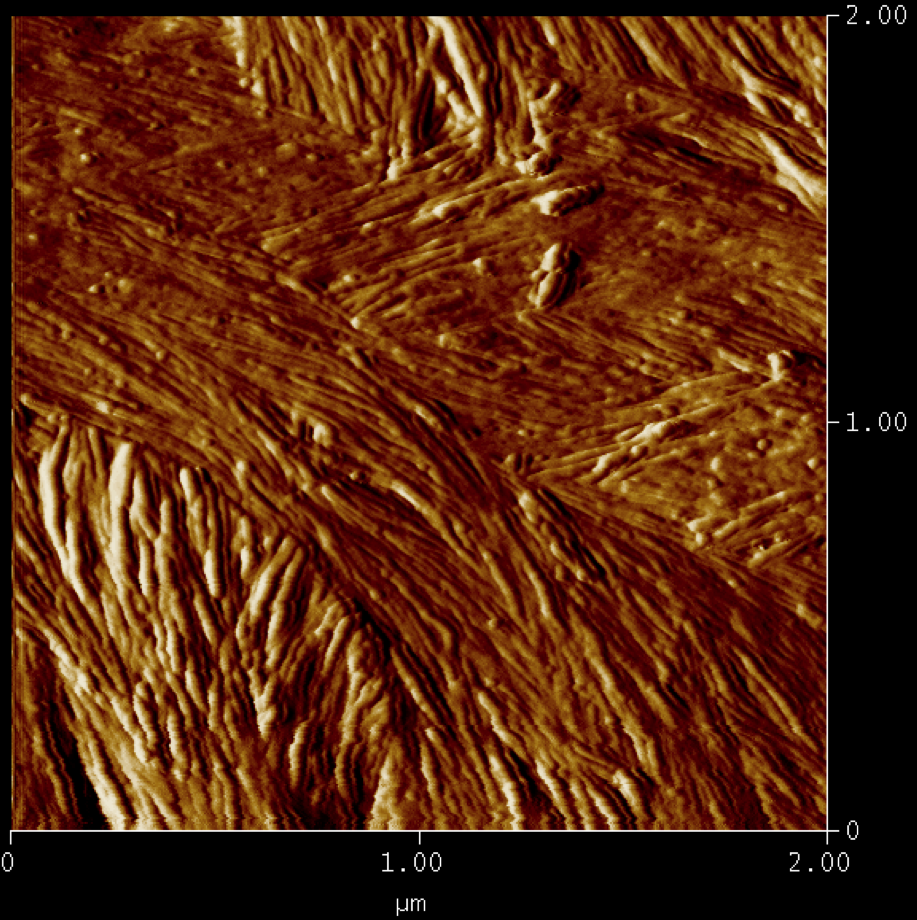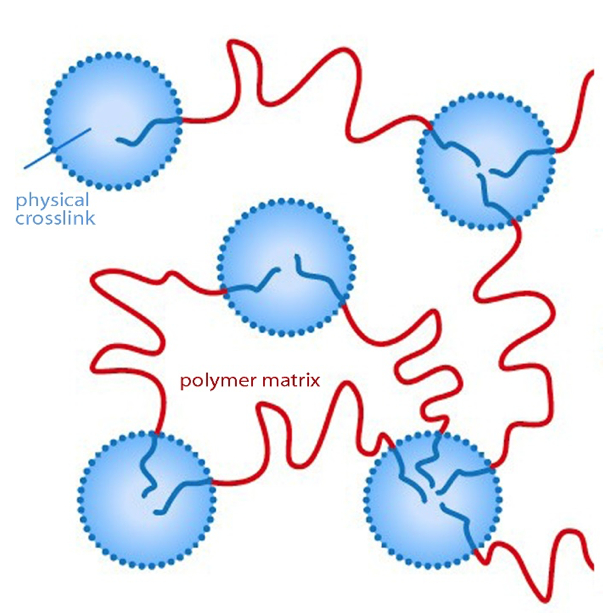Master theses and Master-level research projects
Master theses
Microdeformation in high temperature semicrystalline polyamides
Contact: [email protected]
Semicrystalline polyamides based on semiaromatic repeat units show outstanding strength and stiffness up to much higher temperatures than conventional aliphatic polyamides such as Nylon 66. They are consequently of great interest for replacing traditional metal parts in the automobile industry, for example. However, the current range of applications of semiaromatic polyamides is limited by their poor ductility. The aim of this project will be to use optical and atomic force microscopy to identify the microdeformation mechanisms characteristic of tensile deformation in amorphous and semicrystalline semiaromatic polyamide films with varying aliphatic comonomer contents. The results will then be used to interpret the behaviour of bulk semicrystalline tensile specimens, which have been found to show a remarkable increase in ductility on incorporation of a few weight percent of aliphatic monomer by reactive extrusion compounding. We would like to know, for example, whether this transition is linked to a fundamental change in deformation mechanism and whether it also takes place in the absence of crystallinity. This would allow us to test fundamental hypotheses with regard to this phenomenon, and hence contribute to providing a rational basis for the further optimization of the overall performance of this important class of structural polymer.

Supramolecular Elastomers for High Temperature Applications
Contact: [email protected]
Supramolecular elastomers based on specific non-covalent interactions are a new class of polymers that combine thermoplastic and elastomeric features. For many applications, however, these materials suffer from low softening temperatures. This project therefore aims to develop novel polymer materials that combine both excellent elastic behavior and high softening temperatures. For this purpose, technologically relevant base polymers with low glass transition temperatures will be functionalized by suitable supramolecular motifs that serve as directional physical crosslinks within the polymer matrix (Fig. 1). The supramolecular polymer structure in bulk being corroborated, an investigation of their thermomechanical behavior at different temperatures, mechanical frequencies, and mechanical strains will be pursued. This approach towards high-temperature performance materials comprises state-of-the-art polymer synthesis and characterization, supramolecular polymer chemistry as well as a systematic materials analysis using spectroscopic techniques, scattering, calorimetry, and rheology experiments.

Master-level research projects
Reach out to anyone on the ‘Group Members’ page (LMOM GROUP).